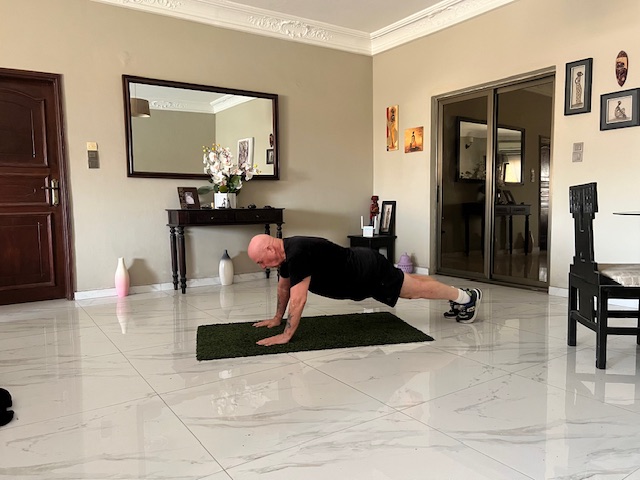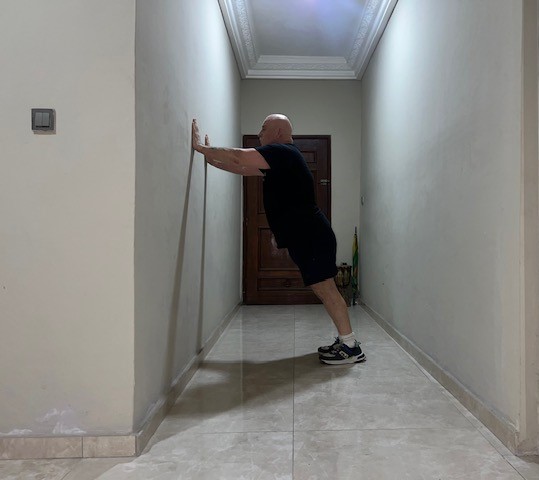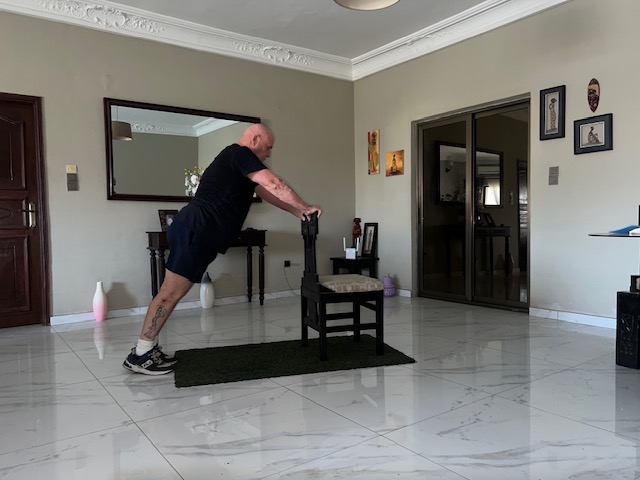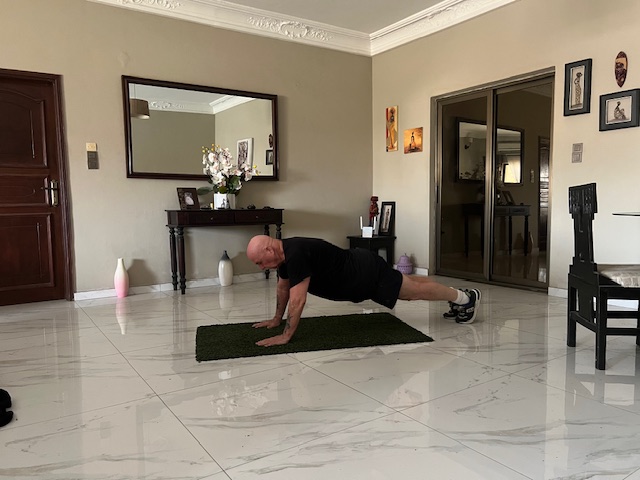
Introduction To Push Ups
The Push Up Exercise. The push-up is the most natural pressing exercise in the horizontal plane. And it uses all the pushing muscles of your upper body, including the pectoral muscles, the triceps, and the shoulder muscles. Consequently, push-ups also require you to stabilize your whole body by contracting your abdominal muscles, glutes, and legs. So then, this makes it a great and effective compound movement to improve functional strength.
By far the biggest fallback of push-ups for seniors is the fact that they require quite a bit of strength, mobility. And body control to perform correctly. Also, especially shoulder pain and mobility can prevent some seniors from performing push-ups comfortably. However, fortunately, there are variations that require much less strength. But do allow you to improve your mobility and strength gradually until you can perform a full push-up. In addition push ups are a great exercise for burning calories which aids your weight loss.
Wall Push Up Exercise
The Push Up Exercise. The wall push-up is performed standing next to a sturdy wall that can support your body weight. The wall push-up is the easiest push-up variation to perform because you only use a fraction of your body weight while standing up. In this case this is the best way for beginners to start.

Chest muscles (Pectoralis major and Pectoralis minor), Serratus anterior, Triceps, Deltoids, Upper and lower back muscles (Trapezius and Rhomboids)
HOW TO DO IT:
- Stand about an arm’s length away from a wall.
- Place your palms flat against the wall at shoulder level.
- Bend your elbows and lower your body toward the wall.
- Keep your back straight and abs engaged.
- Push yourself back to the starting position.
Incline Push Up Exercise
The Push Up Exercise. An incline pushup is an elevated form of a traditional pushup. Your upper body is elevated with a bench or other support capable of holding your weight.
You may find incline pushups to be a step up from your normal routine. The incline position primarily works your chest muscles, but you’ll also need to engage your core muscles to protect your back. So then, each time you lift your body you are lifting about 41 per cent of your total body weight.

Muscles used Chest (pectoralis major) Shoulders (deltoids) Triceps (back of the arms) Core and other stabilising muscles.
HOW TO DO IT:
- Find a raised surface such as a bench, or step.
- Place your hands shoulder-width apart on the incline surface and extend your legs behind you, keeping your feet together.
- Keep your body in a straight line from your head to your heels.
- Slowly descend to the bench by retracting the shoulder blades and unlocking the elbows until your chest touches the bench.
Kneeling Push Up Exercise
The Push Up Exercise. Kneeling push-ups are an easier option for beginners or those who can’t do push-ups. And although the push-up mainly targets the chest muscles, it is a bodyweight exercise that works your triceps and front shoulder muscles. In addition, they can be used to increase the size and definition of your arms and to develop proportional strength between your triceps and your chest. So then, each time you lift your body you are lifting about 49 per cent of your total body weight.

Muscles Used Triceps, Pectoral muscles, and front facing section of the Deltoids
HOW TO DO IT:
- Assume the starting position, with hands slightly wider than shoulder width apart.
- Try to form a straight line from head to knees, and brace your abdomen slightly.
- Lower yourself as deep as you can, while inhaling.
- Reverse the motion when you’ve touched the floor, and push yourself up to straight arms again while exhaling.
- Repeat for reps.
The Full Push Up
The Push Up Exercise. The full pushup requires more work than the kneeling pushup because it does not involve using the knees to help support the body weight. So then, each time you lift your body you are lifting about 64 per cent of your total body weight.

Muscles Used: Pectoralis major and Pectoralis minor, Deltoid major and Deltoid minor, Latissimus dorsi, Rhomboids, and Trapeze.
HOW TO DO IT:
- Start down on all fours with your hands just wider than your shoulders.
- Extend your legs so they form a straight line with your back.
- Lower yourself to the floor until your elbows are at 90 degrees.
- Push yourself back up until your arms are straight.
- Try to do as many push-ups as you can with good form.
Video
DONATE
Pensioner Fitness Awards
THE BUSINESS CONCEPT, BEST IN BUSINESS AWARDS
- “MOST INSPIRING SENIOR WELLNESS WEBSITE 2023“
THE GLOBAL HEALTH AND PHARMA, FITNESS AND NUTRITION AWARDS
2. “BEST SENIOR FITNESS AND NUTRITION SPECIALIST 2023“
THE MIDDLE EAST AND AFRICA BUSINESS AWARDS
3. “ MOST INCLUSIVE FITNESS PROVIDER 2023″
THE CORPORATE LIVE WIRE GLOBAL AWARDS 2023/2024
4. ” FITNESS ADVISORY PLATFORM OF THE YEAR“ 2023/2024
In Conclusion
The push up exercise is extremely effective at building muscle and strength in older adults. However, as older adults we have suffered from sarcopenia for years weakening our old bodies. So then we have to build up to building muscle and strength, Here, use the three progressive push up exercises to build muscle and strength and challenge yourself at each stage for results.
Important Note *
Remember that everyone is different, it is ultimately YOUR RESPONSIBILITY to find what your body responds to. So please do your due diligence before trying anything new, including getting Medical Advice to ensure your safety and peace of mind.
Connect with me and leave a comment